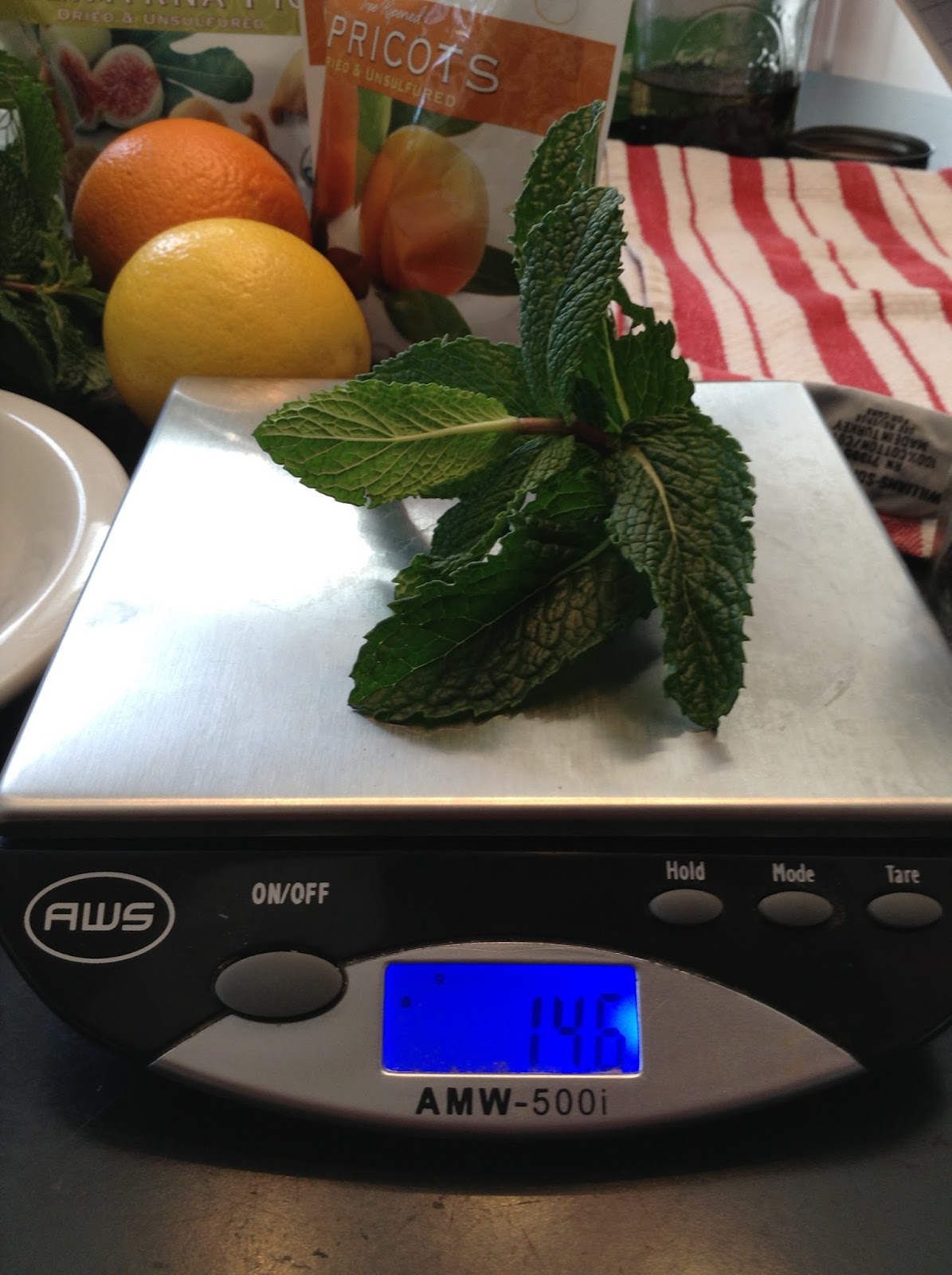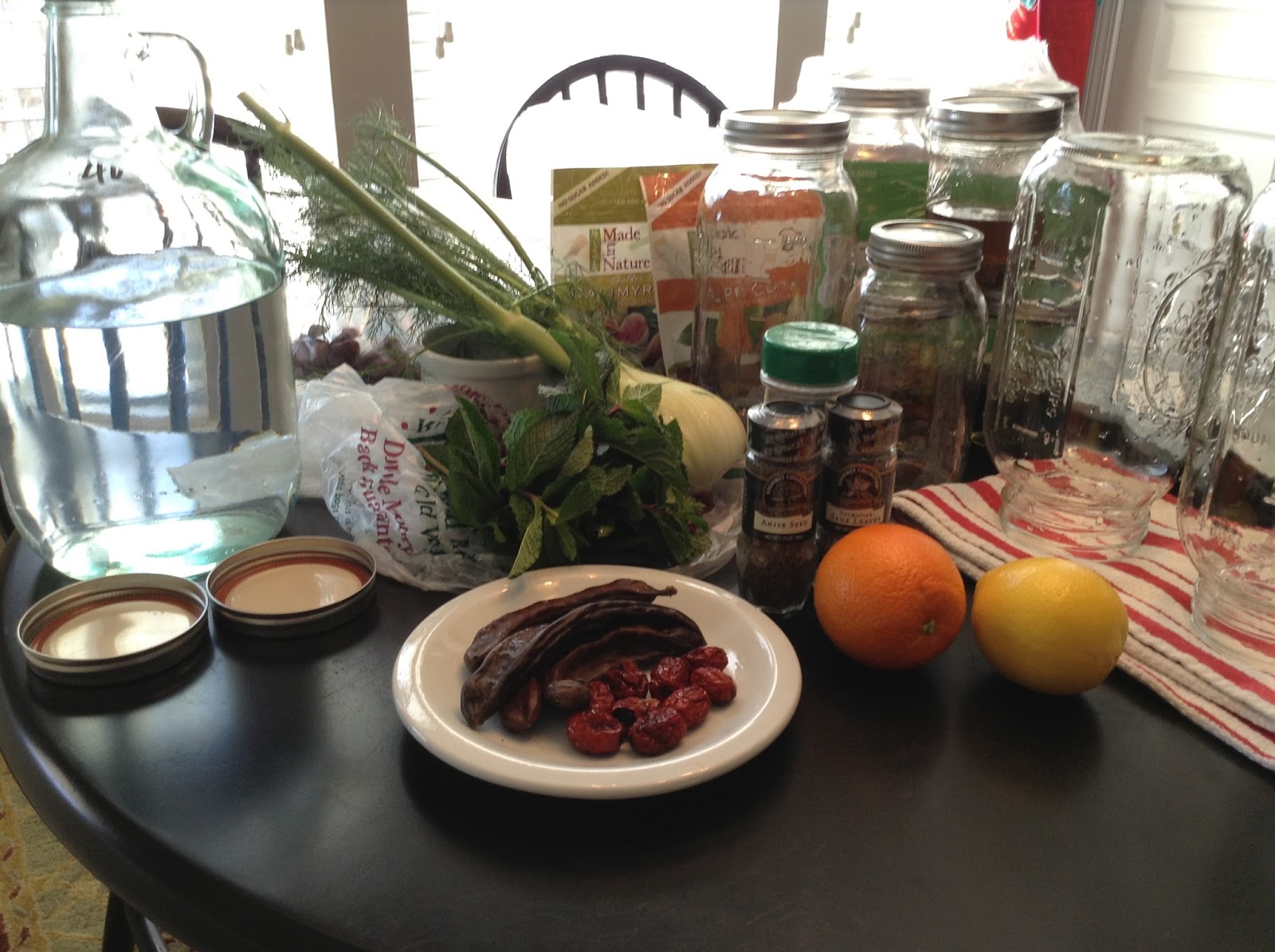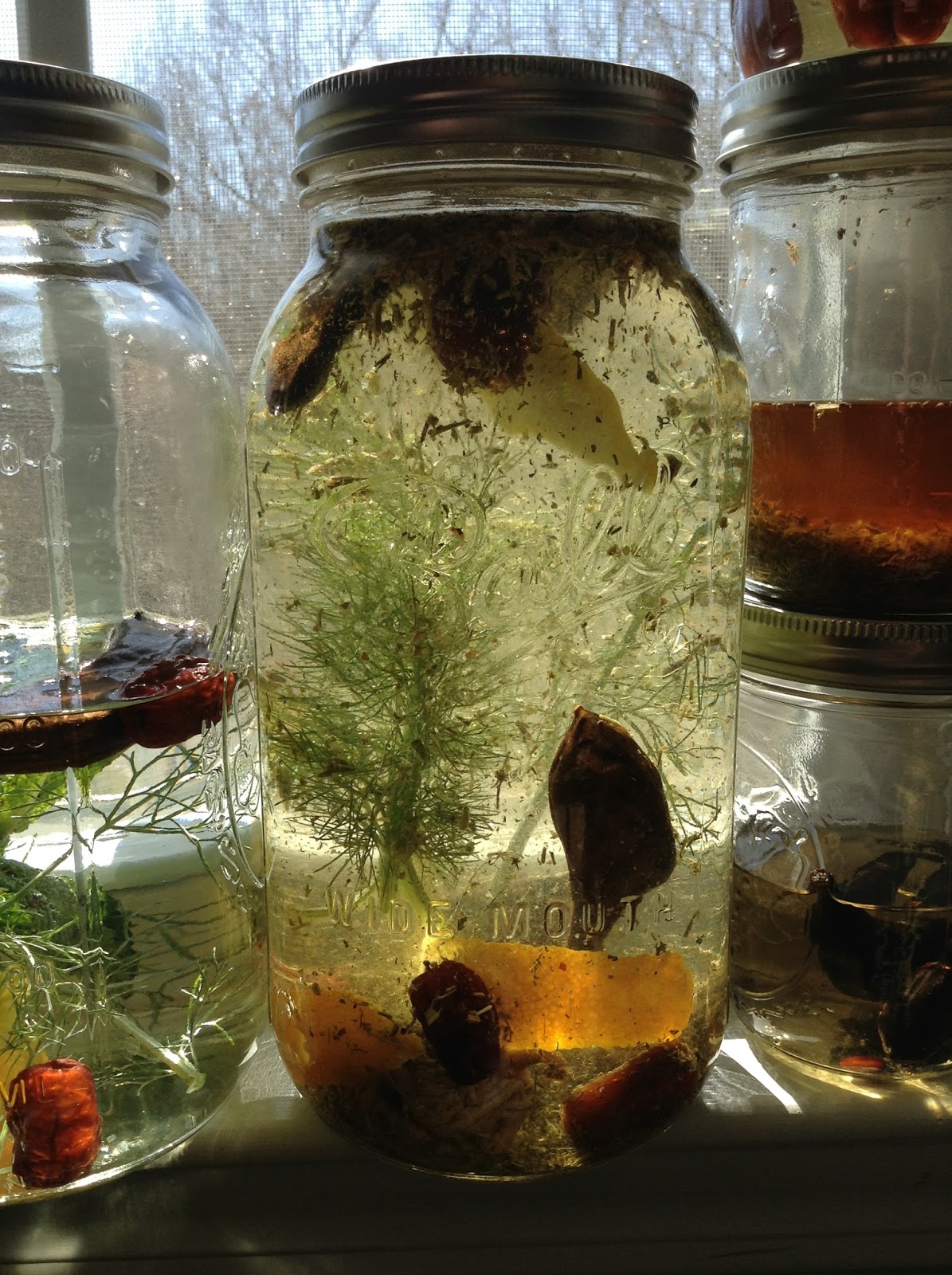Infused Liquor Technique & Tips
Infused liquor is basically liquor macerated in something to give the liquor the flavor or essence of that ingredient. In some cases its simply for taste or color and in others there is actually medicinal value in it. Liquor can be infused with a variety of plants, herbs, spices and seeds to create complex and rich flavors. Here are the basic techniques that I've used and have been taught over the years:
Only use glass or stainless steel vessels to hold your liquor. Don't ever use plastic to store liquor for a long duration. I like Ball Mason Jars in a variety of sizes to macerate liquor in, they are convenient and can last forever. One note, when using a Mason Jar or any container for that matter leave at least a half inch of head room from the top of the jar to allow the liquor to swell and contract as the temperature changes.
Only used edible ingredients, if your not sure don't use it. Flowers make some of the best plant parts to infuse with liquor but you must be sure what you are using is in fact safe for human consumption.
Local forests are a treasure trove of ingredients for medicinal plants, be sure you don't need a permit to remove local nuts, berries and roots.
Macerate in small batches and log your measurements for future use. I always start any new ingredient on a small bench trial before I add it to a bigger mix and I log how many grams I've added to milliliters of brandy. By measuring and logging your ingredients you can develop recipes and have consistent results.
I usually will allow the maceration to take place for about 1 month before I taste the mix and will usually strain the concoction after two months. It all comes down to your taste but know that the flavors will continue to develop and change even after the ingredients have been strained out of the liquor.
Most of liquors I make are left in the sun, indoors, and shaken once a week. The sun heats the liquid which allows for the flavor and color to be drawn out.
You can use any liquor for infusion. Typically you'll want to use something neutral like vodka but you can use anything that tastes good with your mix.
I will macerate lots of little batches of individual ingredients then blend them together to create a master blend. As a example I'll do chamomile vodka then blend in honey brandy to taste.
If you have access to a still you can redistill your macerated liquor for a clear liquor, its a great technique but also illegal.
Only use glass or stainless steel vessels to hold your liquor. Don't ever use plastic to store liquor for a long duration. I like Ball Mason Jars in a variety of sizes to macerate liquor in, they are convenient and can last forever. One note, when using a Mason Jar or any container for that matter leave at least a half inch of head room from the top of the jar to allow the liquor to swell and contract as the temperature changes.
Only used edible ingredients, if your not sure don't use it. Flowers make some of the best plant parts to infuse with liquor but you must be sure what you are using is in fact safe for human consumption.
Local forests are a treasure trove of ingredients for medicinal plants, be sure you don't need a permit to remove local nuts, berries and roots.
Macerate in small batches and log your measurements for future use. I always start any new ingredient on a small bench trial before I add it to a bigger mix and I log how many grams I've added to milliliters of brandy. By measuring and logging your ingredients you can develop recipes and have consistent results.
I usually will allow the maceration to take place for about 1 month before I taste the mix and will usually strain the concoction after two months. It all comes down to your taste but know that the flavors will continue to develop and change even after the ingredients have been strained out of the liquor.
Most of liquors I make are left in the sun, indoors, and shaken once a week. The sun heats the liquid which allows for the flavor and color to be drawn out.
You can use any liquor for infusion. Typically you'll want to use something neutral like vodka but you can use anything that tastes good with your mix.
I will macerate lots of little batches of individual ingredients then blend them together to create a master blend. As a example I'll do chamomile vodka then blend in honey brandy to taste.
If you have access to a still you can redistill your macerated liquor for a clear liquor, its a great technique but also illegal.




Comments
Post a Comment